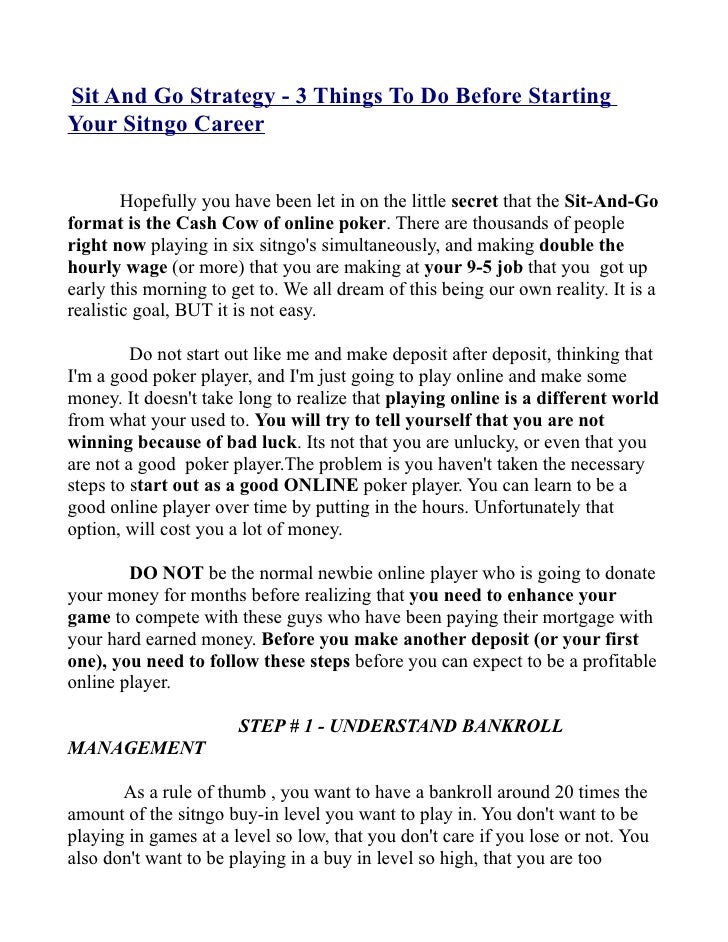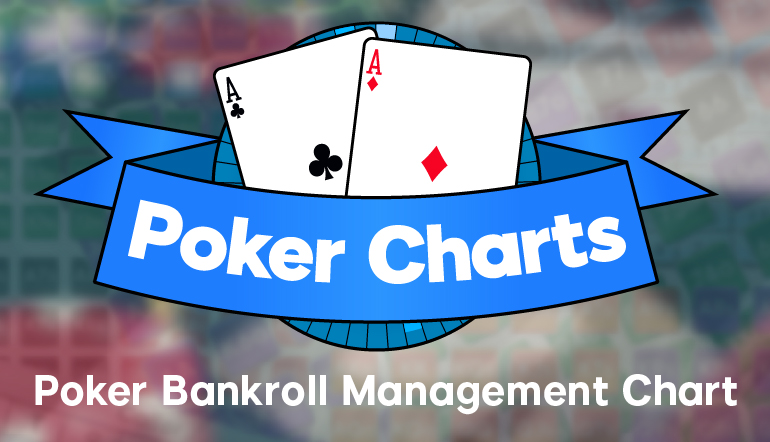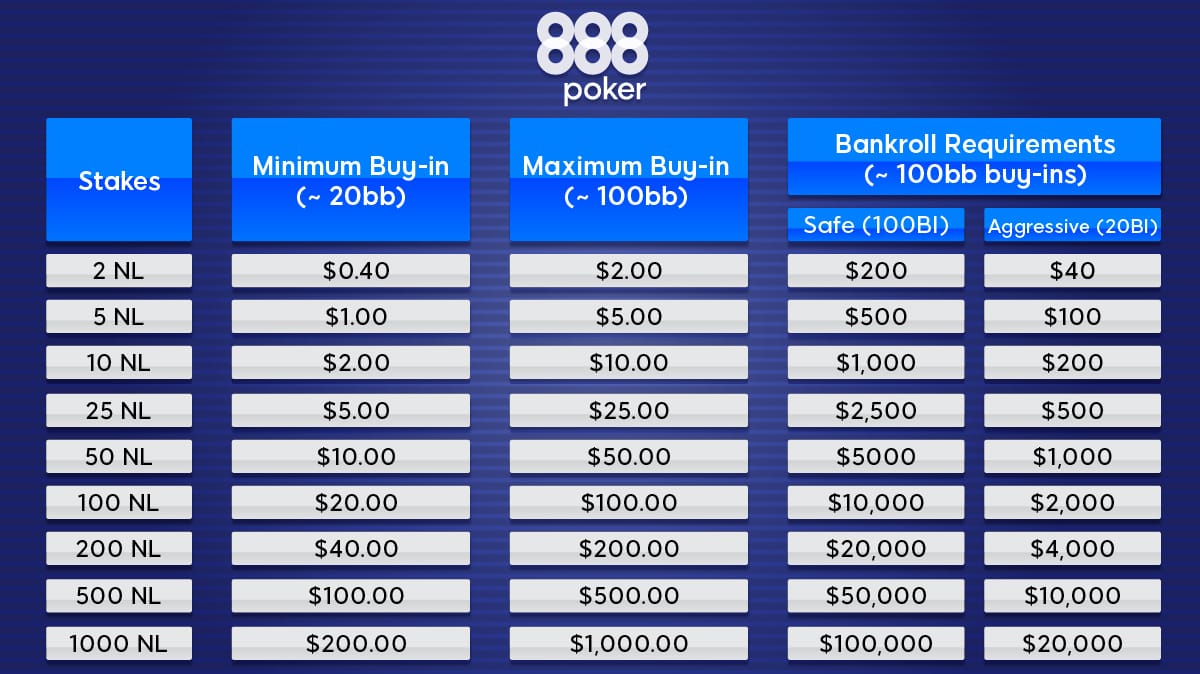Sit And Go Bankroll Management

- Poker Bankroll Management Spreadsheet
- Poker Bankroll Management
- Heads Up Sit And Go Bankroll Management
- Sit And Go Bankroll Management Calculator
- Sit And Go Bankroll Management Online
- Sit And Go Bankroll Management
- Free Poker Bankroll No Deposit
Last week in our series of tips for sit & gos — whether playing online poker or live — we discussed heads-up play. This week, we'll wrap up the SNG series with a look at bankroll management.
We'll start by focusing on developing a plan for determining the bankroll size you need to play SNGs. What constitutes a smart bankroll for playing sit & gos? The answer to this question is a function of the amount of risk you are willing to accept.
Number of Buy-Ins
Sit and Go Bankroll Management. If you are a serious sit and go player, one skill you may be overlooking is bankroll management. Although bankroll management is not the most glorious aspect of the game, successful players all know that maintaining a proper bankroll is the key to avoid going broke. This article will teach you how to properly manage a sit and go bankroll. Bankroll Management Poker Sit And Go first online casino games. It has continually embraced modern technology and has been a Bankroll Management Poker Sit And Go major trendsetter in the industry. Another notable company which develops games for this casino is Play n Go. This developer holds licenses from the UKGC and the MGA, both Bankroll. By playing small stakes sit and gos, if you can manage to take down a couple of these, you can start quickly building your bankroll up $5, $10, $20 or even $50 at a time. This will allow you to quickly build a $500 poker bankroll.
I would suggest a bankroll size of at least 100 buy-ins for conservative players who want to give themselves a very small risk of ruin. This includes professional poker players who cannot easily replace their bankrolls.

If instead, you are a serious recreational player who has a source of income that could be used to replenish your bankroll, then you don't need to be so conservative. In this case, that is, if you're on the less conservative side, you can get away with 50 buy-ins.
Meanwhile, if your goal is to just play a few SNGs for fun instead of strategically building a bigger bankroll, then you can play with as few buy-ins as you like. Just be careful not to play with money you cannot afford to lose.
Slight adjustments to these bankroll requirements can be made based on your return on investment (ROI). This is a measure of how profitable you expect to be in future tournaments based on how well you've done in the past.
If you determine that you have a much larger than average ROI, then you can expect to lose less often than most players. If this is the case, you will need fewer buy-ins than most players. The opposite is true as well — i.e., if you have a lower than average ROI, you'll want to have a bigger bankroll.
Feel free to make these adjustments to your bankroll management plan, but be careful not to take it too far and expose yourself to too much risk.
Moving Up or Down
Once you have decided on a bankroll management plan, your current bankroll will tell you at which level you can start. For example, if you have a $1,000 bankroll and want to take a conservative approach with the goal of being a professional player, then you should start at the level for which you have 100 buy-ins. In this case, that would be the $10 level.
If you go on a bad run, you'll need to drop down in stakes until you build your roll back up to around $1,000. For example, if you lose 50 buy-ins, then you will be left with $500. This is not enough to play $10 SNGs professionally. If this happens, you should drop down to play $5 SNGs since you now have 100 buy-ins for that level. If you recover the $500 you lost, then you can move back up.

On the other hand, if you beat the $10 games handedly, you may eventually double your bankroll to $2,000, or 200 buy-ins for the $10 level. It is completely fine if you want to be ultra-conservative and stay at that level despite the bigger bankroll. But if you feel you are ready, you can move up to the $20 SNGs since you now have enough for 100 buy-ins at that level.
That said, moving up when you have the buy-ins to do so is only half of the equation. Generally, the higher levels are tougher than the lower levels. You must also be sure that you have the proper skill set to compete. Do some self-assessment by taking occasional shots at the higher levels to see how they play and determine what new skills you need to acquire.
When deciding whether or not to move up or down, ROI once again becomes a factor. Most likely, your goal when you play poker online for real money is to make the most money you can per tournament. Sometimes, this can be better achieved at a lower level than a higher one even if you are properly rolled to move up.
Poker Bankroll Management Spreadsheet
For example, let's say you've determined that you have a 20 percent ROI at $10 SNGs. This means that you make $2 per game on average. If properly rolled, you can move up to the $20 SNGs, but you wouldn't want to do so unless you believe that you have at least a 10 percent ROI at that level.
If your ROI is lower than this, you actually make more money at the lower level. Even if it is exactly 10 percent, you'd want to consider staying at the lower level. Even though you make $2 per game at both levels, the one in which you have the higher ROI will result in lower variance. If you are going to move up and deal with bigger swings, you should make sure you are being paid a premium to do so.
Poker Bankroll Management
Conclusion
I hope this series on sit & go strategy has been helpful to you. SNG mastery is a great skill to have because it gives you experience that is transferable to other types of poker tournaments. SNGs always start at the final table, so you should feel somewhat at home if you later decide to play an multi-table tournament and make it to the end.
Also in this series...
Ready to start giving sit & gos a try? Put these tips into practice at PokerStars.
Tags
tournament strategyno-limit hold’emsit & go strategyonline pokershort-handed strategysatellite strategyheads-up strategybankroll managementROIRelated Room
Full Tilt
Bankroll management is one of the most crucial elements for success in poker. Each type of poker will have slightly different bankroll requirements, and even the limits that you play will be very important when determining how much money you really need. For example, a SNG player will need a different number of buy-ins than a cash game player.
To go even further, a high stakes sit and go player will need a lot more padding in their bankroll than a small stakes sit and go player. Even within the same smaller types of games, there are still drastic differences and dynamics that need to be accounted for. One of the easiest ways to go broke is by mis managing your bankroll.
There are a lot of players who think that they can take shots and that everything will be just fine. While there is certainly merit in taking shots, you should also be prepared for if and when you might fail. Always be prepared to fail just as you are to succeed. The reality is that you could be the best player in a game and still lose a whole lot of money, so it only makes sense to be ready for whatever might happen.
Heads Up Sit And Go Bankroll Management
The actual managing of your bankroll will only happen if you start off with a sufficient amount of money. If you start playing in high stakes cash games with just a few buy ins, you are already making a big mistake and never really had an apt bankroll to manage in the first place. This is something that too many players do by default.
Sit And Go Bankroll Management Calculator
If you want to really have control of your poker career, you need to know and understand that money management is incredibly important. Aside from tilt, improper bankroll management is the number one reason why players go broke - or at the very least, don’t live up to their potential.
Bankroll Management for Sit and Gos

Sit and gos come in a variety of shapes and sizes. You can choose from small stakes games, mid stakes games, high stakes games, and so on and so forth. In addition, there are a number of variants when it comes to the speed of games. There are regular sit and gos, turbo sit and gos, ultra turbo sit and gos, etc. The speed of the blinds will play a large role in the amount of variance that you should expect to encounter. Faster games, the ultra turbos for example, will inevitably create much more dramatic downswings and upswings.
Small and mid stakes sit and go players can generally work with 40-50 buy ins. Now, this assumes regular paced tables and that you are comfortable with your given stakes. If you are playing turbo or ultra turbo tables, you should add a significant amount of buy ins to your bankroll, potentially even doubling the total.
Sit And Go Bankroll Management Online
There is not as much risk in sit and gos as there is in standard multi table tournaments, but 10 buy in downswings are not rare. As you move up in limits, be prepared to add more and more buy ins to your bankroll. High stakes sit and go players will often have hundreds of buy ins just to play it safe.
Heads up sit and go players, and sometimes even short handed players, will usually carry larger bankrolls than full ring players. Heads up players are especially prone to variance and need to always have at least 100 buy ins. No matter what limits you are playing, the variance will be crazy. Your edge in the long run should be quite large, but short term variance can be a killer. Prepare yourself for the roller coasters by playing with a significant bankroll. Here is another opinion from another one of our authors on heads up bankroll management.
Sit And Go Bankroll Management

Bankroll Management for Tournaments
Tournament play is similar to sit and gos, but it will require a whole lot more protection. In a standard sit and go, aside from heads up games, about 30% of the players will make the money. In a tournament, however, that number is usually closer to 10%. There is a tradeoff to keep in mind, however, in that tournament payouts are almost always larger than sit and go payouts. No matter how you look at it, tournaments are very streaky. You could win a 10,000 player tournament today and not cash for 20 days straight after that. Just ask Chris Moneymaker.
If you want to play tournaments without worrying about going broke, you should always work with a few hundred buy ins. Yes, you heard that correctly, a few hundred. There may be thousands and thousands of players in the Sunday Million, but it is a guarantee that only a select few of those players have the $40,000 bankroll that they really should.
Smaller stakes MTT players can get away with smaller bankrolls because of the weaker competition, but the mid and high stakes tournament players should always make sure that they are able to sustain a prolonged losing streak.
Bankroll Management for Cash Games
Bankroll management in cash games is one of the more simplified strategies. There are some general rules of thumb for players to follow in ring games, but these should still be adjusted accordingly. Micro and small stakes players are usually safe with bankrolls containing 25-30 buy ins. Mid stakes players should have closer to 40 buy ins, while high stakes players are best off keeping 100 or more buy ins. 40 to 100 buy ins is a big jump in general requirements from mid stakes games to high stakes games, but this is where you will find the biggest leap in competition.
Free Poker Bankroll No Deposit
If you are losing, set a number where you will move back down in limits. Shot taking is particularly prevalent in cash games, so it is important for these players to know when they need to step down and work their way back up. If you over extend yourself for too long in games that you are not beating for whatever reason, you may very well end up on the sidelines. Always put your pride behind your finances when it comes to properly managing a bankroll.